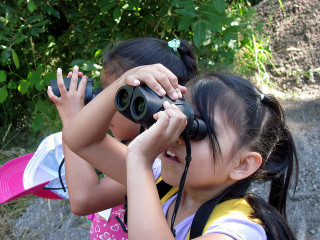 Many cities point to their open spaces as very special, but Bidwell Park is really the jewel in the crown of Chico. A very distinctive place respected and revered by the citizens of Chico, all seem to think they know it well, but there is a lot more to the park than many people realize. Hikers and bikers know the trails, baseball and soccer participants are familiar with fields, summer users know all the picnic areas, and parents and grandparents know Caper Acres and other children’s play areas.
Many cities point to their open spaces as very special, but Bidwell Park is really the jewel in the crown of Chico. A very distinctive place respected and revered by the citizens of Chico, all seem to think they know it well, but there is a lot more to the park than many people realize. Hikers and bikers know the trails, baseball and soccer participants are familiar with fields, summer users know all the picnic areas, and parents and grandparents know Caper Acres and other children’s play areas.
A much smaller proportion of park users recognize the flora and fauna—the trees, wildflowers, vines, and shrubs, some native and some not. Squirrels, deer, raccoons, opossums, lizards, snakes, nets, salamanders, and a variety of fish inhabit the park, often unnoticed.
People are more aware of birds because they are lively, colorful, talkative and active during the day. But without effort on the part of the observer, all birds seem alike. This is an attempt to give personalties to the varied but most common birds of Bidwell Park. Most of these birds are also at home throughout the Sacramento Valley, usually found in similar habitats and at similar times of the year.
BIRDWATCHING BASICS
They say the best birdwatcher is another bird. What you look for may not be what another bird looks for, however. Strolling by yourself, you notice only the occasional jay or robin, but after you go on a casual jaunt with an avid birdwatcher, an entire new world opens to you. Jays, sparrows, warblers, sparrows, woodpeckers, hawks, and vultures are now everywhere. They were always there, but you focused on other things.
When you try to identify birds, you have to look at them in a new way. There is typically no one characteristic that distinguishes one bird from another; it’s a set of characteristics. Just as there is no single way to tell a make and a model of one automobile from another, there is no single characteristic to tell birds apart. All autos have headlights, tires, bumpers, windshields, and other parts in common. All birds have feathers, beaks, scaled legs, tails, and wings. But the variation in those parts plus the coloration and patterning of the feathers, makes each species unique and most are easy to identify.

Obtain a decent pair of binoculars. The magnification, lens size, and features of a binocular are personal choice, but a 7×35 or 8×42 pair seems to be most birdwatchers’ preference.
Always locate a bird with your naked eye first. Binoculars give you a narrow field of View and it is hard to find a bird by scanning with them. And scan from right to left; we read from left to right and scanning in the opposite direction slows down the scan.
A song or call can be a very clue or even the clue to identifying a bird, but it takes some experience to learn these.
Finally, my best recommendation for the beginning birdwatcher: go out in the field with those folks who know the birds. If you don’t have a friend who does, contact the local Audubon Society near Chico or Redding, or, for Bidwell Park birding, theChico Creek Nature Center.

There is no one way to identify birds, but there are major clues. By following these clues, you can eliminate possibilities and narrow your choices. The clues are:
Size—Sparrows and thrushes are distinctly smaller than hawks and bigger than kinglets, for example.
Shape—Is it tall and thin or short and round? Does it have wide or narrow wings or tail? The silhouette of the bird can tell you a lot.
Bill—Both size and shape are important. Is it long, hooked, upcurved, stout?
Pattern—Does it have patches, stripes, splotches or bars on the background color, wing, or tail of the bird?
Habitat—Is it in a marsh, a forest, grassland, or lake?
Behavior—Is it pecking on a tree, probing in the grass, swimming, or soaring?
Color—Although looking for color seems obvious, color can be missing or the bird may be in dark shade, making it appear dark or even black, or it might be in bright direct light, making it look different than it would in a moderate light. But in good light, color is very helpful.

Dr. Roger Lederer, Professor Emeritus of Biological Sciences at CSU, Chico, has birdwatched in more than 90 countries. In addition to The Birds of Bidwell Park, his books include Amazing Birds, Pacific Coast Bird Finder, and Birds of New England. His websiteOrnithology.com—an excellent aid for all birders and nature lovers—has been used and acknowledged as a resource by the BBC, National Geographic, National Public Radio, National Canadian Television, and many other organizations and individuals. He served as Dean of the College of Natural Sciences for 10 years, and was the University’s first endowed Professor of Environmental Literacy. He also served as a founding member of Up the Road’s Board of Directors.